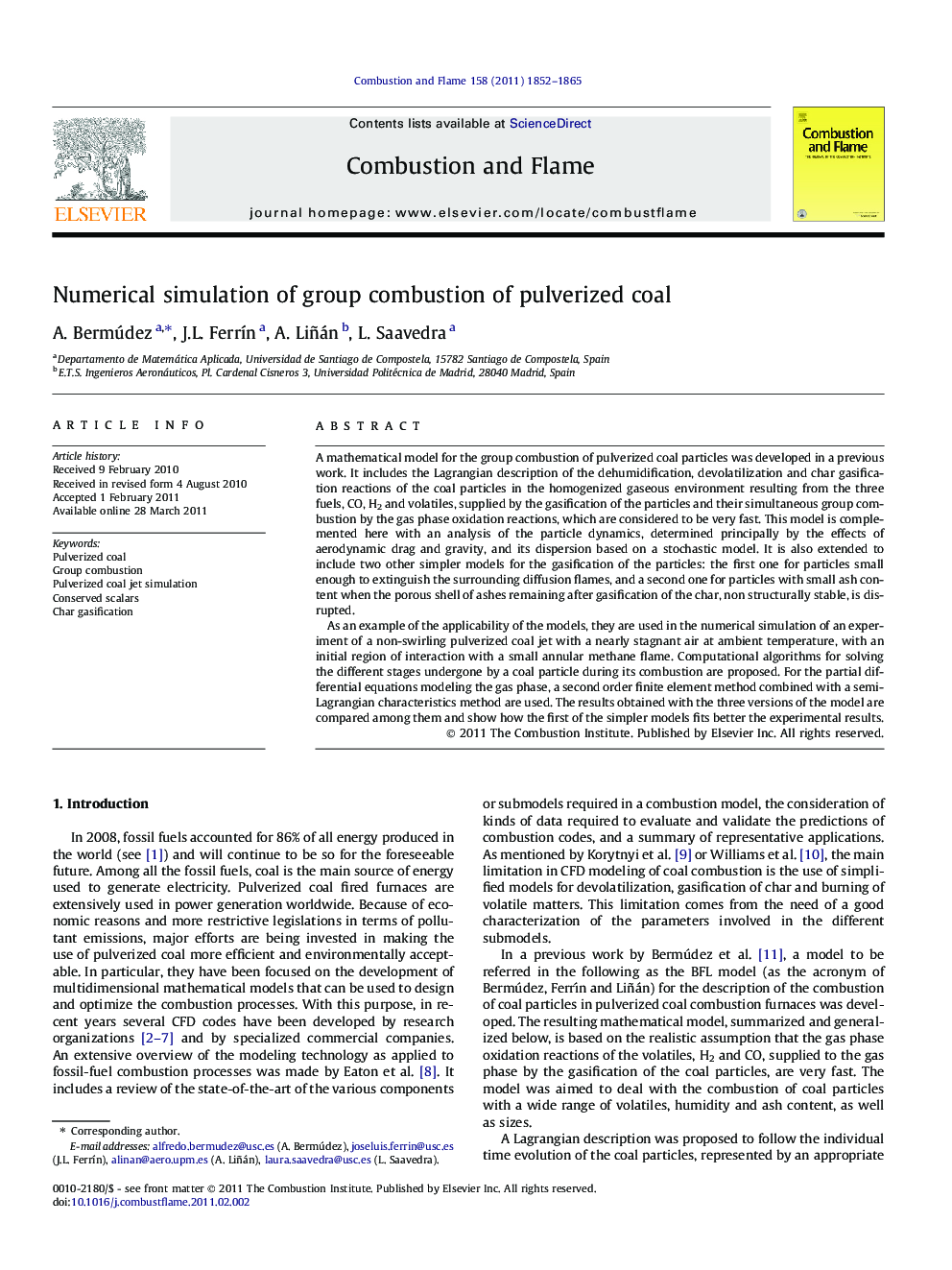| Article ID | Journal | Published Year | Pages | File Type |
|---|---|---|---|---|
| 169470 | Combustion and Flame | 2011 | 14 Pages |
A mathematical model for the group combustion of pulverized coal particles was developed in a previous work. It includes the Lagrangian description of the dehumidification, devolatilization and char gasification reactions of the coal particles in the homogenized gaseous environment resulting from the three fuels, CO, H2 and volatiles, supplied by the gasification of the particles and their simultaneous group combustion by the gas phase oxidation reactions, which are considered to be very fast. This model is complemented here with an analysis of the particle dynamics, determined principally by the effects of aerodynamic drag and gravity, and its dispersion based on a stochastic model. It is also extended to include two other simpler models for the gasification of the particles: the first one for particles small enough to extinguish the surrounding diffusion flames, and a second one for particles with small ash content when the porous shell of ashes remaining after gasification of the char, non structurally stable, is disrupted.As an example of the applicability of the models, they are used in the numerical simulation of an experiment of a non-swirling pulverized coal jet with a nearly stagnant air at ambient temperature, with an initial region of interaction with a small annular methane flame. Computational algorithms for solving the different stages undergone by a coal particle during its combustion are proposed. For the partial differential equations modeling the gas phase, a second order finite element method combined with a semi-Lagrangian characteristics method are used. The results obtained with the three versions of the model are compared among them and show how the first of the simpler models fits better the experimental results.
